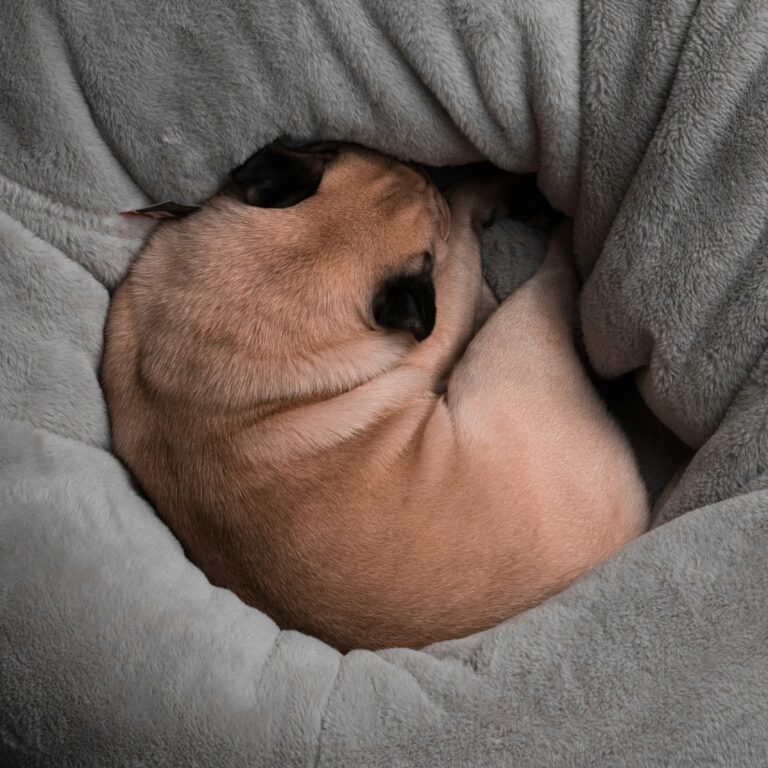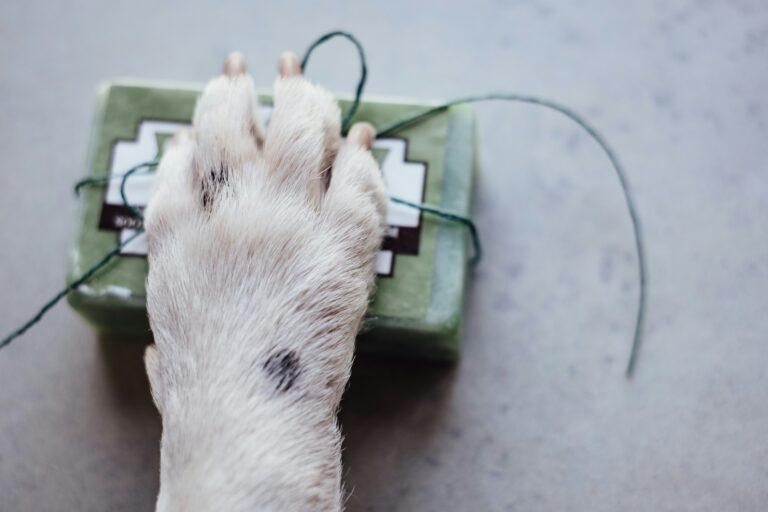Every dog owner knows that a happy pup is a healthy pup, and maintaining your pet’s well-being requires more than just regular feeding and exercise. An often-overlooked aspect of canine health, particularly for small dogs, is the condition of their paws. This is where we step in, with a comprehensive guide that will keep your furry friend’s paws in the “paw-sitive” light they deserve. 🐾💕
In this comprehensive guide, we will delve into everything you need to know about small dog paw health. From understanding why paw care is crucial, to learning about common paw problems and how to prevent them – we’ve got it all covered. We will also share essential tips on grooming, paw pad care, nail trimming, and even choosing the right footwear for your small dog to keep their paws healthy and happy. ✂️🐶
Moreover, we will also highlight expert-recommended products and home remedies to help combat various paw-related issues. We’re here to help you navigate the way to better paw health for your petite canine companion. Strap in and prepare to embark on a journey to healthier, happier paws for your small dog. Let’s make every step count! 🐾🌿
Understanding the Importance of Paw Health
Paw health is a crucial aspect of overall canine wellness, particularly for small dogs. With their petite size, their paws bear the brunt of their daily activities. The pads on their paws provide cushioning to protect bones and joints, while also offering insulation from extreme weather conditions. In addition, they act as a barrier against various types of bacteria and fungi found on the ground.
Small dogs’ paws are often more sensitive due to their size and weight distribution, which can lead to a variety of paw-related health problems. Therefore, it is important to regularly monitor your dog’s paws and take proactive steps to ensure they remain healthy and happy.
Routine maintenance, including cleaning, moisturizing, and inspecting for injuries or infections, plays a vital role in preventing serious issues. Healthy paws contribute not only to your dog’s comfort but also to their ability to stay active, playful, and energetic throughout their life.
Common Paw-Related Issues in Small Dogs
Paw Pad Injuries
Paw pad injuries are a common issue in small dogs. These can be caused by walking on hot or cold surfaces, stepping on sharp objects, or due to allergies. Symptoms may include limping, bleeding, redness, swelling, or a reluctance to walk.

Nail Problems
Nail problems such as overgrown or split nails can cause discomfort and pain in small dogs. Overgrown nails can curl and grow into the paw pad, causing pain and potentially leading to infection. Regular nail trims are essential to prevent these problems.
Paw Allergies
Paw allergies can be caused by a variety of factors, including certain types of grass, chemicals, or food allergies. Symptoms often include constant licking or chewing of the paws, redness, and inflammation.
Essential Tips for Paw Care
Regular Paw Checks
Regularly checking your small dog’s paws is the first step in maintaining their health. This allows for the early detection of any potential issues, such as cuts, sores, swelling, or changes in color. In addition, you should feel the pads for any abnormalities or foreign objects.
Proper Paw Cleaning
Proper paw cleaning is essential to remove dirt, debris, and harmful bacteria that your dog may pick up during their walks. Always clean your dog’s paws after outdoor activities, paying special attention to the areas between the toes. If your dog has allergies, consider using hypoallergenic wipes.

Moisturizing the Paws
Just like human skin, dog’s paw pads can become dry and crack, leading to discomfort. Using a dog-safe paw balm or moisturizer can help to keep the pads soft and prevent cracking.
The Role of Diet and Exercise in Paw Health
A Nutrient-Rich Diet
A nutrient-rich diet plays a significant role in maintaining your dog’s paw health. Vitamins, minerals, and healthy fats contribute to the overall health of the paw pads and nails. Therefore, feeding your dog a balanced diet is vital.
Regular Exercise
Regular exercise helps to keep your small dog’s paws strong and healthy. However, it’s important to ensure the exercise is appropriate for their size and breed to prevent overexertion or injury. Avoid walking your dog on hot or icy surfaces, as these can cause harm to their paws.
Professional Paw Care
Maintaining your small dog’s paw health is a commitment that goes beyond the basics of home care. While daily checks, proper cleaning, and good nutrition are fundamental, professional veterinary and grooming services add an extra layer of protection and care. These services ensure that your dog’s paws are not only healthy on the surface but are monitored and treated from a deeper health perspective when needed.

Veterinary Check-ups
Regular veterinary check-ups are vital to the overall well-being of your dog, including the condition of their paws. Many paw issues can begin subtly, with symptoms that might not be immediately obvious to an untrained eye. A veterinarian can spot early warning signs of infections, allergies, autoimmune diseases, or structural problems that may not be visible externally.
During a typical check-up, your vet will:
- Inspect the paws and pads for signs of cuts, abrasions, infections, or abnormal growths.
- Examine the nails to ensure they are healthy, free of fungal infections, and not growing incorrectly.
- Assess the joints for signs of arthritis or other musculoskeletal issues that can affect how your dog walks and uses their paws.
- Recommend preventive care, such as specific supplements or protective creams based on your dog’s lifestyle and environment.
Early intervention is crucial. Treating a minor cut or an early-stage infection promptly can prevent it from escalating into a more serious condition that could require extensive treatment or even surgery.
When to Visit the Vet Immediately:
- Persistent limping or favoring of a paw
- Swelling, redness, or warmth around the paws
- Foul odor emanating from the paws
- Visible wounds or excessive bleeding
- Noticeable changes in nail color, thickness, or growth direction
Never hesitate to consult your veterinarian if you have concerns about your dog’s paws. It’s better to have a minor issue checked early than to wait until it becomes a major problem.
Grooming Services
In addition to veterinary care, professional grooming services can play a significant role in maintaining your small dog’s paw health. Groomers are trained to handle delicate areas like paws with care and expertise, providing detailed attention that might be challenging for pet owners to manage at home.
Benefits of Professional Grooming for Paw Care:
- Thorough Cleaning: Groomers ensure that all dirt, debris, and possible irritants are washed away from between the toes and pads.
- Nail Trimming: Proper nail trimming is essential. Nails that are too long can cause discomfort and alter the way a dog walks, potentially leading to joint issues.
- Paw Pad Hair Trimming: For breeds with hair that grows between the pads, trimming helps prevent matting and the accumulation of dirt and moisture that could lead to infections.
- Paw Massages: Some groomers offer paw massages that stimulate blood circulation, which can help keep the tissues healthy and flexible.
- Application of Paw Balms: Many grooming services include applying moisturizing balms to protect and nourish the pads, especially in extreme weather conditions.
Regular grooming sessions not only keep your dog clean and comfortable but also allow trained professionals to notice abnormalities early and recommend veterinary attention if necessary.
Finding the Right Groomer:
When selecting a grooming professional, it’s important to choose someone experienced with small breeds and their unique needs. Always look for groomers who:
- Have certifications or professional training
- Use pet-safe products
- Offer a clean, stress-free environment
- Allow you to observe or inquire about their paw-care techniques
Word-of-mouth recommendations from other pet owners or referrals from your veterinarian can be excellent resources for finding trustworthy grooming services.
Importance of Preventive Measures at Home
While professional care is essential, maintaining a daily routine at home greatly reduces the risk of serious paw problems. Prevention is always more effective and less stressful than treatment. Here are a few daily and weekly habits to build:
Daily Paw Inspections:
- After walks, inspect your dog’s paws for foreign objects such as stones, burrs, or thorns.
- Check for signs of irritation if your dog has walked on salted roads, hot pavement, or rough terrain.
- Wipe the paws clean after outdoor activities, especially during allergy seasons or in areas with chemical treatments.
Weekly Paw Maintenance:
- Brush the hair between the toes if your dog has longer fur to prevent matting.
- Apply moisturizing balm if you notice dry or cracked pads.
- Monitor nail growth and plan for trimming when necessary (typically every 3–4 weeks).
Seasonal Paw Care Tips
Different seasons pose unique challenges to paw health, making seasonal adjustments to care routines necessary.
Winter:
- Salt and Ice: Road salt can irritate and burn paw pads. Always rinse and dry your dog’s paws after winter walks.
- Protective Boots: Consider dog boots to protect paws from ice and salt.
- Moisturize: Cold air can dry out the pads. Regular application of paw balm can prevent cracking.
Summer:
- Hot Pavement: Surfaces can become dangerously hot and burn sensitive paws. Always check pavement temperature with your hand before walks.
- Hydration: Keep your dog well-hydrated to support overall skin and paw pad health.
Spring and Fall:
- Allergens: Pollen and mold can cause allergic reactions in the paws. Rinse your dog’s feet after walks.
- Wet Conditions: Moist environments can harbor bacteria and fungi, leading to infections. Dry paws thoroughly after exposure to wet grass or puddles.
Home Remedies and Natural Paw Care
Some dog owners prefer using natural methods to complement veterinary and grooming services. Here are a few gentle home remedies:
- Coconut Oil: Known for its moisturizing and antimicrobial properties, coconut oil can soothe dry and cracked pads.
- Aloe Vera: Pure aloe vera gel (free of added chemicals) can help heal minor cuts or abrasions.
- Oatmeal Soaks: An oatmeal bath can relieve itching and irritation caused by allergies or dryness.
- Calendula Cream: This herbal remedy can be applied to minor cuts and scrapes to promote healing.
Always consult your veterinarian before introducing new treatments to ensure they are safe for your dog’s specific needs.
Final Thoughts
Professional paw care, when combined with consistent home routines, creates a robust system for protecting your small dog’s paws. Veterinary check-ups ensure early detection and treatment of potential issues, while grooming services maintain hygiene, comfort, and beauty. At home, preventive measures and seasonal care adaptations play a crucial role in safeguarding your dog’s paws year-round.
By prioritizing professional care, you’re investing in your dog’s long-term comfort, mobility, and happiness. Your small dog relies on their paws for every step of their adventures—whether it’s exploring the backyard, accompanying you on errands, or simply snuggling at home. Healthy paws are fundamental to a joyful, active life.
Let’s commit to giving our furry companions the paw-sitive attention they deserve. 🐾✨
Conclusion
In conclusion, taking care of your small dog’s paws is a “paw-sitively” essential aspect of their overall health and happiness. The importance of regular grooming, proper footwear, and attention to potential hazards in their environment cannot be overstated. By adhering to these essential tips, you will not only ensure the well-being of your furry friend’s paws, but also help prevent serious health issues down the line.
Regular paw checks are vital, as they can reveal early signs of issues such as infections or injuries. Additionally, choosing the right footwear for different weather conditions can make a world of difference in protecting your pup’s sensitive paws. And let’s not forget the potential hazards at home and outdoors – from hot pavement to toxic chemicals, being mindful of these dangers can go a long way in keeping your dog safe and happy.
In the end, it’s all about providing your small dog with the care and attention they deserve. Remember, a healthy paw equals a happy dog and a happy dog equals a happy pet parent. So let’s put our best paw forward and strive to keep our small dogs’ paws healthy and happy. After all, they do say “the journey of life is sweeter when traveled with a dog.” 🐾🐶



